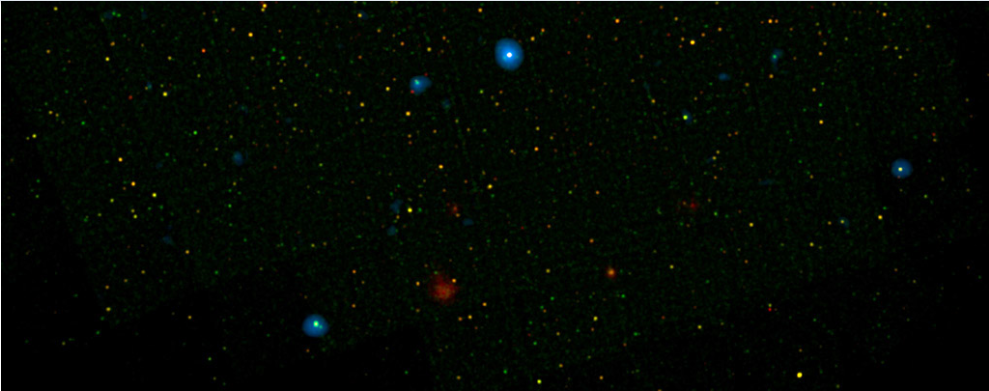The blue dots in this field of galaxies, known as the COSMOS field, show galaxies that contain supermassive black holes emitting high-energy X-rays. The black holes were detected by NASA’s Nuclear Spectroscopic Array, or NuSTAR, which spotted 32 such black holes in this field and has observed hundreds across the whole sky so far.The other colored dots are galaxies that host black holes emitting lower-energy X-rays, and were spotted by NASA’s Chandra X-ray Observatory. Chandra data show X-rays with energies between 0.5 to 7 kiloelectron volts, while NuSTAR data show X-rays between 8 to 24 kiloelectron volts.
Credit: NASA/JPL-Caltech
Astronomers used NASA’s Nuclear Spectroscopic Telescope Array (NuStar) to pinpoint large numbers of black holes that emit high-energy X-rays. Black holes grow by pulling matter towards them. As the matter heats, particles get boosted to speeds close to the speed of light. These processes make the black hole surroundings emit X-rays. Other X-ray satellites, like Chandra and XMM-Newton, have managed to find many active black holes, but only those that emit at lower energies.
Using the new data from NuStar, scientists have now managed to resolve 35 percent of the cosmic X-ray background. These results will not only help astronomers understand which are the physical mechanisms that feed the supermassive black holes, but also how their evolution affects the formation of the galaxies that host them.
Publication: Harrison et al. 2016
Source: NASA

